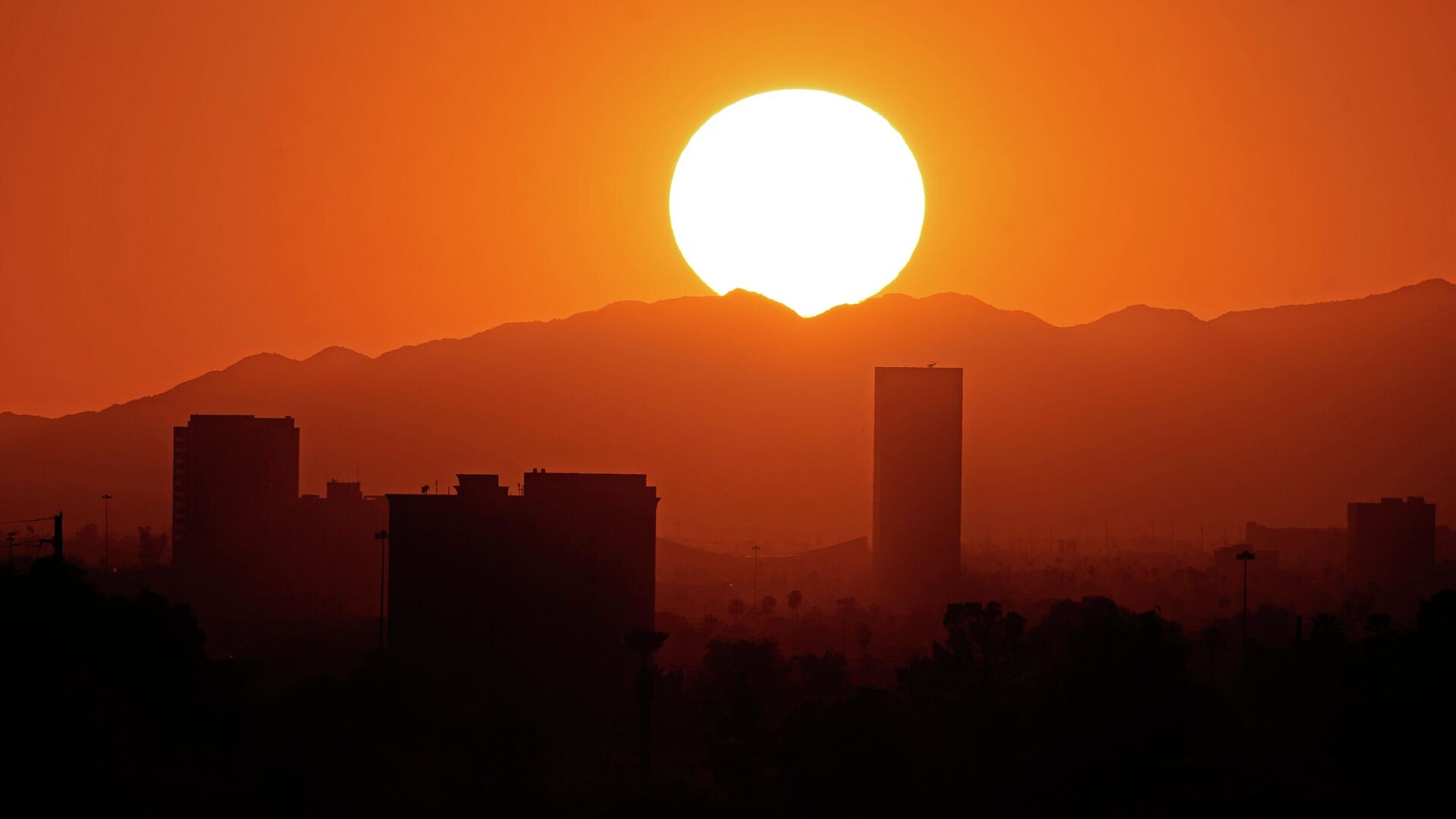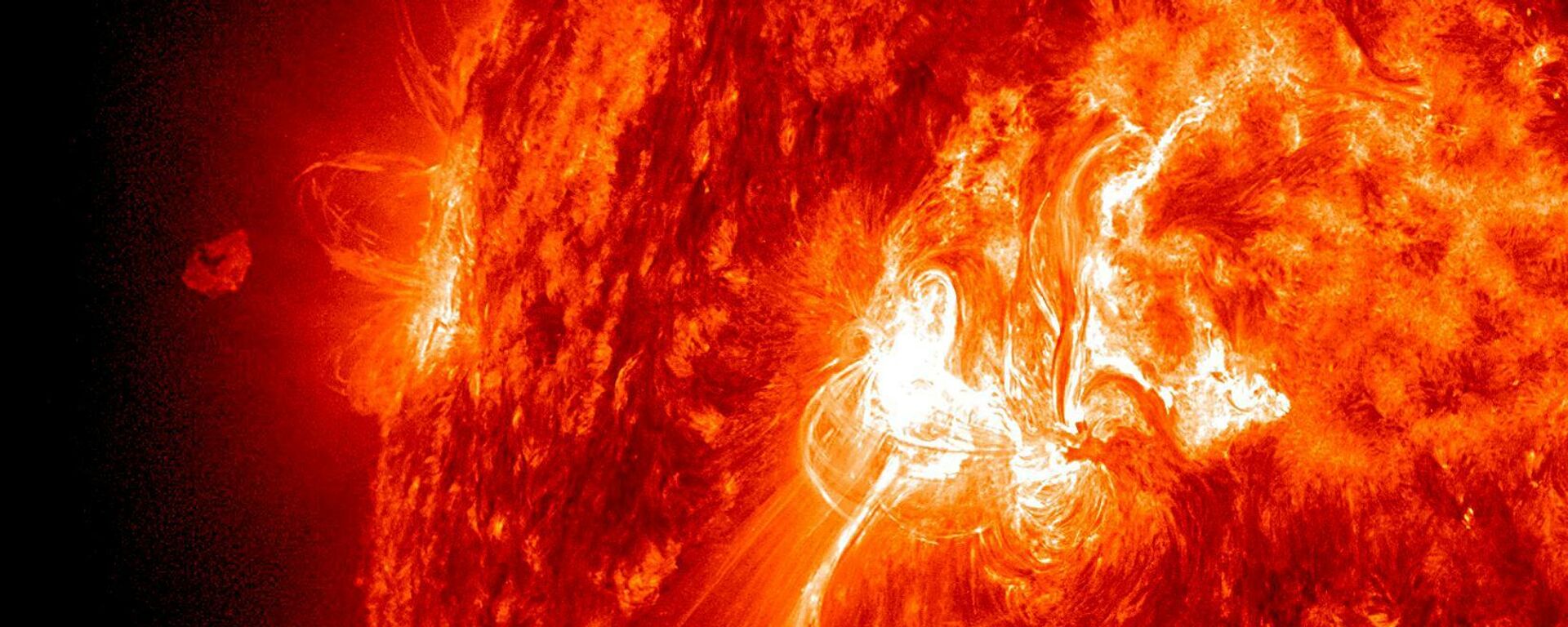Watch Out! Solar Ejection Headed Toward Earth on Thursday, May Prompt Aurora Spectacle
04:16 GMT 12.04.2022 (Updated: 16:57 GMT 12.04.2023)

© AP Photo / Charlie Riedel
Subscribe
Sunspots are dark areas on the sun's surface that scientists say are created by a powerful magnetic flux from the sun's interior, and that these blemishes are only transient as they can last anywhere from a few hours to several months.
A sunspot ruptured on Monday, generating a mass ejection of solar wind that is heading toward Earth and expected to hit our planet on Thursday.
According to the report published on Science Alert, the explosion is caused by a dead sunspot known as AR2987. The sunspot explosion released a large amount of energy in the form of radiation, as well as a coronal mass ejection (CME), or explosive balls of solar material, all of which could cause the northern lights to become more powerful in Earth's upper atmosphere.
The recent CME could reportedly produce a modest (G1) geomagnetic storm on April 14, with minor effects on satellite operations and weak power grid oscillations. The aurora could be seen as far south as the northern US and Canada, at lower latitudes than usual.
According to Philip Judge, a solar physicist at the High Altitude Observatory at the National Center for Atmospheric Research, who was quoted in the report as saying, those "dead" sunspots can "restart,” with more magnetism appearing later (days, weeks) at the same region, as if a weakness was made in the convection zone, or as if there is an unstable region under the surface that is particularly good at generating magnetic fields beneath.
The AR2987 sunspot released a C-class solar flare this Monday.
When the plasma and magnetic fields above a sunspot are stressed, they speed outward because they would run against dense material if they moved downward toward the Sun's center. While C-class flares are fairly common, they rarely have direct impacts on Earth.
When charged particles from CMEs collide with the magnetic field surrounding Earth, they can travel down magnetic field lines emanating from the North and South Poles, interacting with gasses in the atmosphere and releasing energy in the form of photons, resulting in the aurora – the northern and southern lights.
Sharing all 1689 photos from 1126pm to 1234am last night with no editing. I started out with 5 second exposures. As the aurora brightened and sped up I lowered, eventually getting to 1 second exposures at 43 seconds in to this video. pic.twitter.com/PXOtZrr5hR
— Don Moore (@capture907) April 11, 2022
A stream of particles known as the solar wind is enough to cause the aurora in the polar regions during quiet moments on the sun's surface. The aurora may emerge across a considerably wider region during a major CME due to the higher disturbance to the planet's magnetic field.

